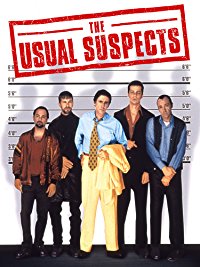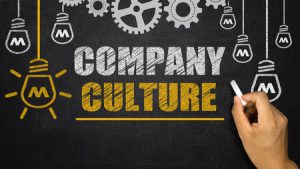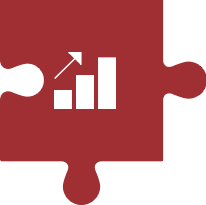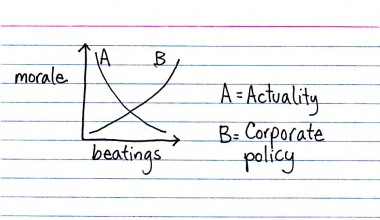We all know what it’s typically like at conferences with the standard array of keynotes, presentations, vendors, rehash, and buffet breakfasts. So at the 2018 Art & Science of Health Promotion Conference, I wanted to approach the leaders of our field and ask them what’s new here?
What’s the big idea? And what is going to push our field forward.
ONE

I started with Michael O’Donnell (CEO of the Conference itself) and he told me that even though health promotion has evolved over the past four decades since the seminal release of Healthy People: The Surgeon General’s Report on Health Promotion and Disease Prevention, it has practically exploded over the past decade.
And given how quickly new wellness products and ideas have popped up lately, he told me the Big Idea of this conference is about how to thread them together. It’s about synthesis.
That is, upstart wellness programs are fine, but we also need to consider how they can be knit together, and consolidated in a way that can more effectively serve our groups.
I think it’s natural that any period of rapid growth must be followed by sober self-assessment. What works, what doesn’t, and how can the parts all fit together. In this sense, this conference was lining up to be thoughtful and productive.
TWO
 I guess because I’m pathologically early to everything, I arrived for the pre-conference intensive sessions as well, and had the good fortune to attend David Hunnicutt’s training on healthy culture creation. One afternoon, I caught up with him to ask what he saw as the Big Idea of the conference.
I guess because I’m pathologically early to everything, I arrived for the pre-conference intensive sessions as well, and had the good fortune to attend David Hunnicutt’s training on healthy culture creation. One afternoon, I caught up with him to ask what he saw as the Big Idea of the conference.
He pointed out that our next steps in the field will require going beyond the obvious — the walking programs, stress programs, education programs, financial wellness programs. The Big Idea here is to recognize that these “usual suspects” won’t work, unless the ground is prepared in advance.
To do that, we need to communicate a compelling vision that can be easily articulated to motivate leadership, managers, and employees. Next, processes need to be put into place to improve employee communications of that vision (knowing their expectations, feeling comfortable giving/receiving feedback, and improving peer to peer relationships). In tandem, these two aspects will help create an environment that is more resilient, positive, and passionate about their daily work.
As that positive environment develops, only then will the standard programs be able to truly take hold and flourish.
THREE
 Heading out of one of the many excellent talks, I caught up with Judd Allen, a longtime leader and pioneer in creating healthy cultures in corporations. When asked about the Big Idea here, he paused and emphasized how we need to more effectively reach employees, especially given the growth over the past decade.
Heading out of one of the many excellent talks, I caught up with Judd Allen, a longtime leader and pioneer in creating healthy cultures in corporations. When asked about the Big Idea here, he paused and emphasized how we need to more effectively reach employees, especially given the growth over the past decade.
I honestly think that’s where Judd’s mind goes from start to finish. How to create the conditions to allow for the greatest number of employees to have the greatest success.
For example, he then said, “you know, we’re at the shallow end of this learning curve.” A completely intriguing thing to say, so I asked him to elaborate. He responded that improving health for a population was often treated to be as simple as telling people what to do, and then they’d go do it. Now we know that’s as simple as it is simplistic.
Such an approach self-selects for self-starters – that 5% in the bell curve of behavior who love all the new options we’re seeing. By contrast, we know those on the opposite end of the curve will never be moved by wellness. So the Big Idea we are seeing now, according to Judd, is a new focus on creating the supportive environments and healthy cultures for that broad middle of the population.
As an industry, we’re just learning how to do that now (hence the “shallow end of the curve”).
FOUR
 Heading up and back from my room to the presentations, I ran into Ron Goetzel in the elevator. My head said, “IT’S RON GOETZEL!!” But I actually said, oh so nonchalantly, “Oh. Hi Ron.”
Heading up and back from my room to the presentations, I ran into Ron Goetzel in the elevator. My head said, “IT’S RON GOETZEL!!” But I actually said, oh so nonchalantly, “Oh. Hi Ron.”
I introduced myself and we chatted about this conference and the ideal of A Big Idea. He talked about health promotion, but in an interesting way, in terms of the health of a “host”. Ron pointed out that we need to recognize employee wellness as a partner in keeping the employer host sound. They’re not separable, really. If the employees are unwell, the company suffers; if the company is unwell, the employees will struggle no matter what programs get thrown at them.
Because of this interlocking connection between pieces, Ron said that for true organizational wellness we have to think more broadly than the individual puzzle pieces — the 10k step program + HRA + a snazzy website. And yes, there are elements of a company’s health that are outside the scope of wellness professionals (making quarterly production goals, completing the basic business blocking and tackling). But these two should not be treated as the siloes they have been in the past.
There is more than just physical survival to a person, and there’s also more than just monetary survival to a company. Having a healthy connection between the body mind and spirit (of a company or a person), creates a thriving organism at any level.
FIVE
 As I was beating a now well-worn path to the hotel Starbucks, I ran across Paul Terry (president and CEO of the Health Enhancement Research Organization (HERO)), said hello and thought nothing more of it on my way to re-up my afternoon caffeine infusion.
As I was beating a now well-worn path to the hotel Starbucks, I ran across Paul Terry (president and CEO of the Health Enhancement Research Organization (HERO)), said hello and thought nothing more of it on my way to re-up my afternoon caffeine infusion.
Afterwards he saw me and graciously came by to chat, so I asked him about his keynote on Friday and what he felt was the Big Idea. He told me that our field is developing best practices and “industrial strength quality improvement methodologies”, but it’s all over the map at this point. The next Big Idea is to consolidate the effective approaches and better understand them so we can “apply them at scale.” Another intriguing statement.
The development of our field (with its rapid growth of independent wellness programs and methodologies) is a bit like an organization with many many site locations. In this circumstance, a good strategy is to use a best practices model. Once you survey the many methods and outcomes, you can consolidate and approach the entire group with processes that have been shown to work locally.
At this point Paul said that we need to start being to apply our understanding of individual instances, get an understanding of best practices, and then apply them for companies at scale to truly have an impact on population health.
Summary
It was great speaking to these leaders in the field, and many common themes emerged although each from a different perspective. All agreed that the wellness industry has dramatically expanded in the past decade and that, as wellness providers, we must expand our vision beyond these individual programs to build models for knitting them together. The context of that consolidation however, must include compelling communication that motivates employees within the fertile ground of a healthy company culture. This is how the organizational organism can provide the conditions that can best sustain its business and its employees.


